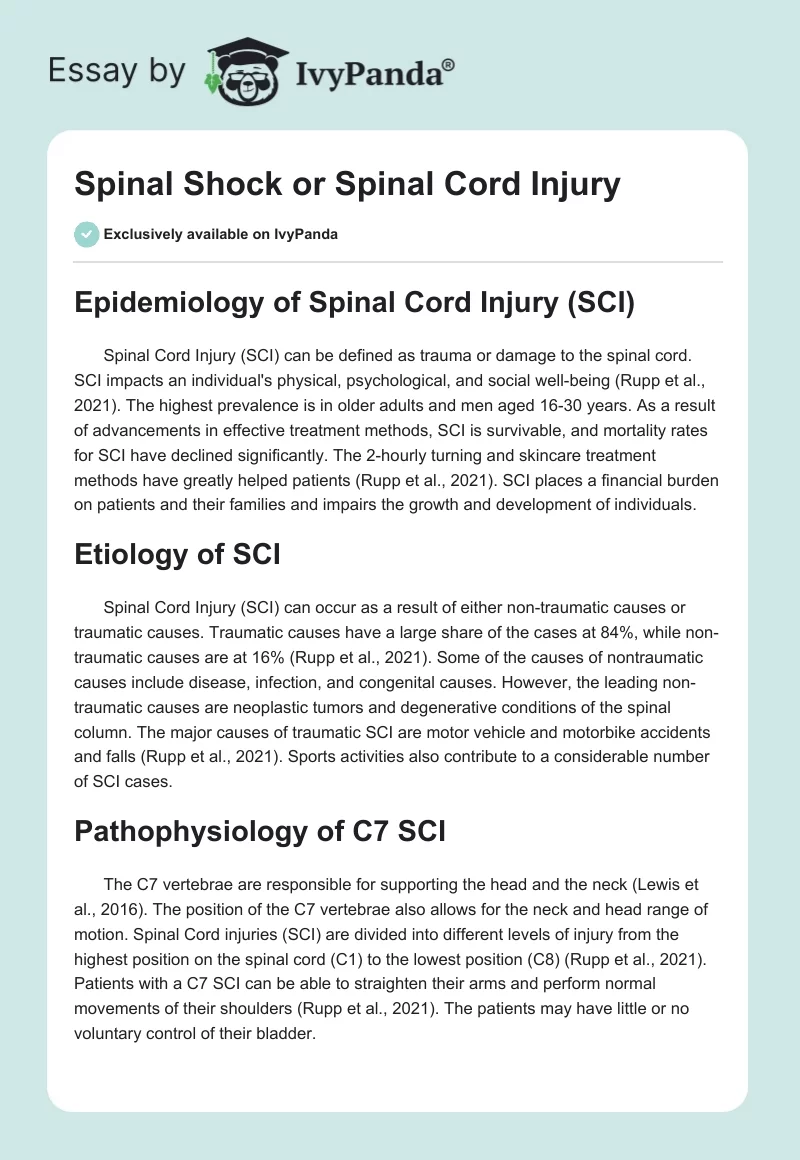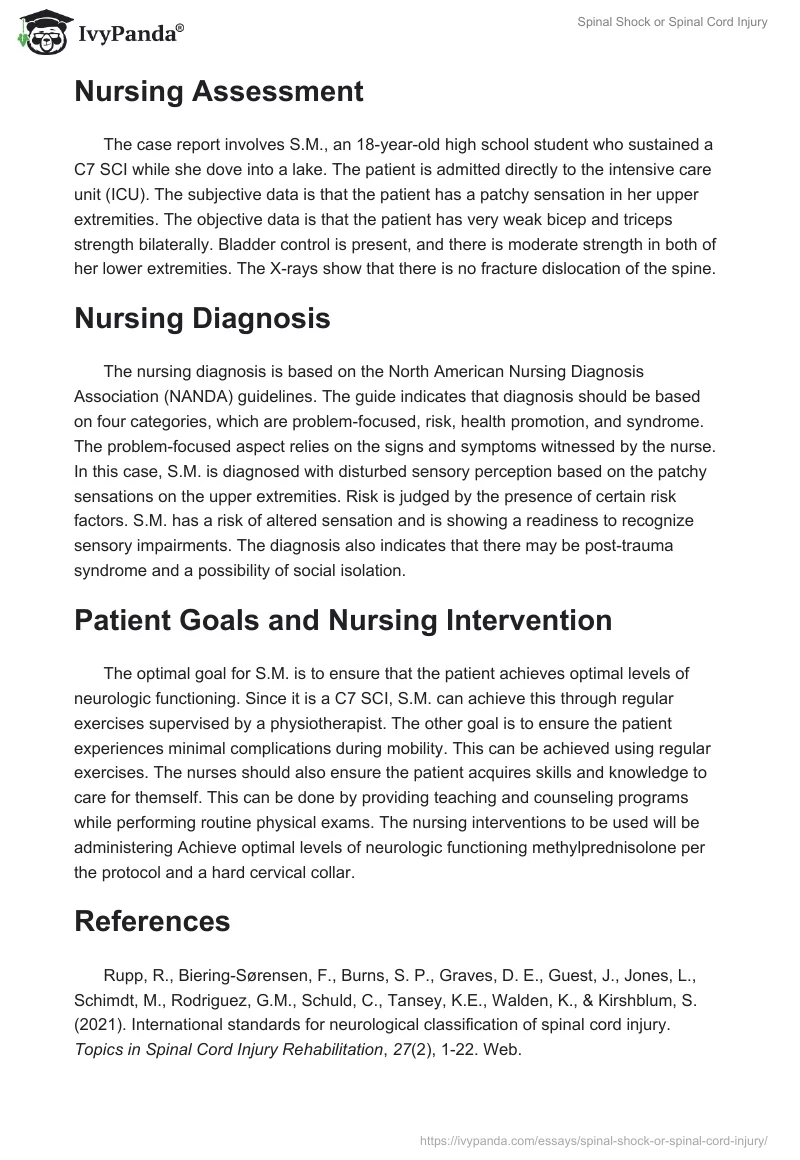Epidemiology of Spinal Cord Injury (SCI)
Spinal Cord Injury (SCI) can be defined as trauma or damage to the spinal cord. SCI impacts an individual’s physical, psychological, and social well-being (Rupp et al., 2021). The highest prevalence is in older adults and men aged 16-30 years. As a result of advancements in effective treatment methods, SCI is survivable, and mortality rates for SCI have declined significantly. The 2-hourly turning and skincare treatment methods have greatly helped patients (Rupp et al., 2021). SCI places a financial burden on patients and their families and impairs the growth and development of individuals.
Etiology of SCI
Spinal Cord Injury (SCI) can occur as a result of either non-traumatic causes or traumatic causes. Traumatic causes have a large share of the cases at 84%, while non-traumatic causes are at 16% (Rupp et al., 2021). Some of the causes of nontraumatic causes include disease, infection, and congenital causes. However, the leading non-traumatic causes are neoplastic tumors and degenerative conditions of the spinal column. The major causes of traumatic SCI are motor vehicle and motorbike accidents and falls (Rupp et al., 2021). Sports activities also contribute to a considerable number of SCI cases.
Pathophysiology of C7 SCI
The C7 vertebrae are responsible for supporting the head and the neck (Lewis et al., 2016). The position of the C7 vertebrae also allows for the neck and head range of motion. Spinal Cord injuries (SCI) are divided into different levels of injury from the highest position on the spinal cord (C1) to the lowest position (C8) (Rupp et al., 2021). Patients with a C7 SCI can be able to straighten their arms and perform normal movements of their shoulders (Rupp et al., 2021). The patients may have little or no voluntary control of their bladder.
Nursing Assessment
The case report involves S.M., an 18-year-old high school student who sustained a C7 SCI while she dove into a lake. The patient is admitted directly to the intensive care unit (ICU). The subjective data is that the patient has a patchy sensation in her upper extremities. The objective data is that the patient has very weak bicep and triceps strength bilaterally. Bladder control is present, and there is moderate strength in both of her lower extremities. The X-rays show that there is no fracture dislocation of the spine.
Nursing Diagnosis
The nursing diagnosis is based on the North American Nursing Diagnosis Association (NANDA) guidelines. The guide indicates that diagnosis should be based on four categories, which are problem-focused, risk, health promotion, and syndrome. The problem-focused aspect relies on the signs and symptoms witnessed by the nurse. In this case, S.M. is diagnosed with disturbed sensory perception based on the patchy sensations on the upper extremities. Risk is judged by the presence of certain risk factors. S.M. has a risk of altered sensation and is showing a readiness to recognize sensory impairments. The diagnosis also indicates that there may be post-trauma syndrome and a possibility of social isolation.
Patient Goals and Nursing Intervention
The optimal goal for S.M. is to ensure that the patient achieves optimal levels of neurologic functioning. Since it is a C7 SCI, S.M. can achieve this through regular exercises supervised by a physiotherapist. The other goal is to ensure the patient experiences minimal complications during mobility. This can be achieved using regular exercises. The nurses should also ensure the patient acquires skills and knowledge to care for themself. This can be done by providing teaching and counseling programs while performing routine physical exams. The nursing interventions to be used will be administering Achieve optimal levels of neurologic functioning methylprednisolone per the protocol and a hard cervical collar.
References
Rupp, R., Biering-Sørensen, F., Burns, S. P., Graves, D. E., Guest, J., Jones, L., Schimdt, M., Rodriguez, G.M., Schuld, C., Tansey, K.E., Walden, K., & Kirshblum, S. (2021). International standards for neurological classification of spinal cord injury. Topics in Spinal Cord Injury Rehabilitation, 27(2), 1-22. Web.
Lewis, S. L., Bucher, L., Heitkemper, M. M., Harding, M. M., Kwong, J., & Roberts, D. (2016). Medical-surgical nursing: Assessment and management of clinical problems. Elsevier Health Sciences.


